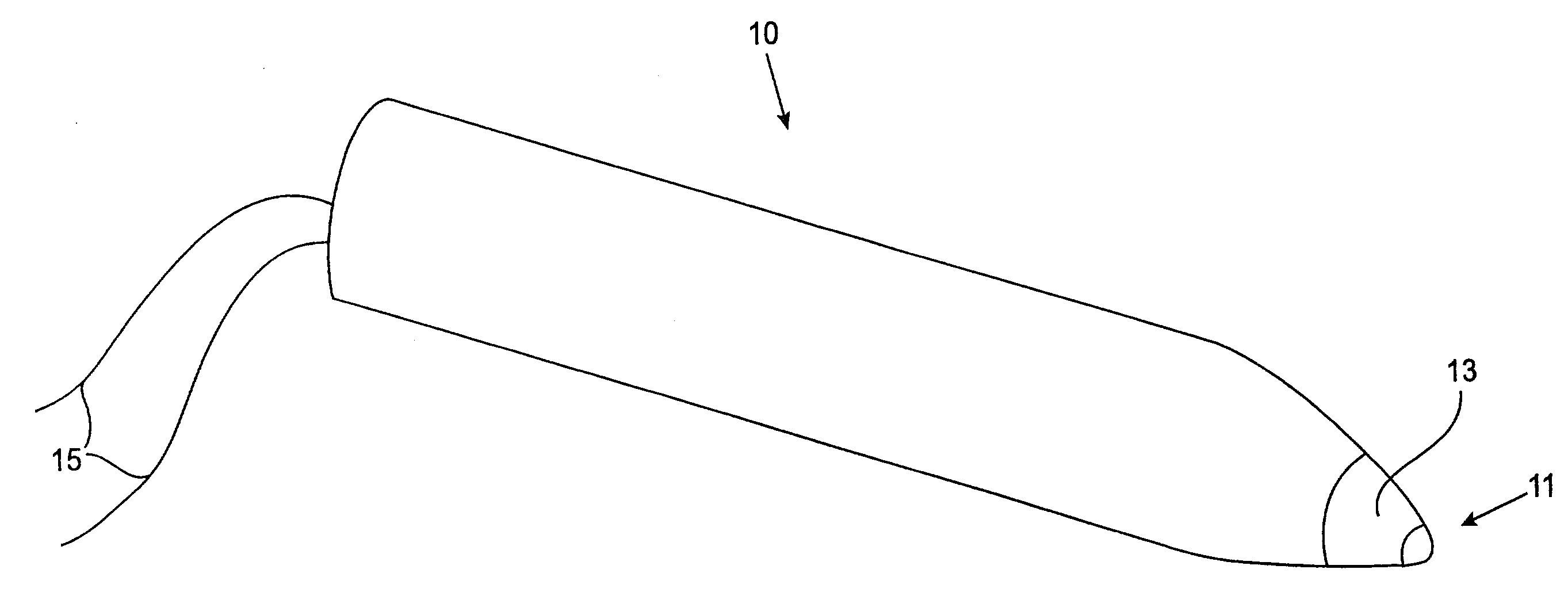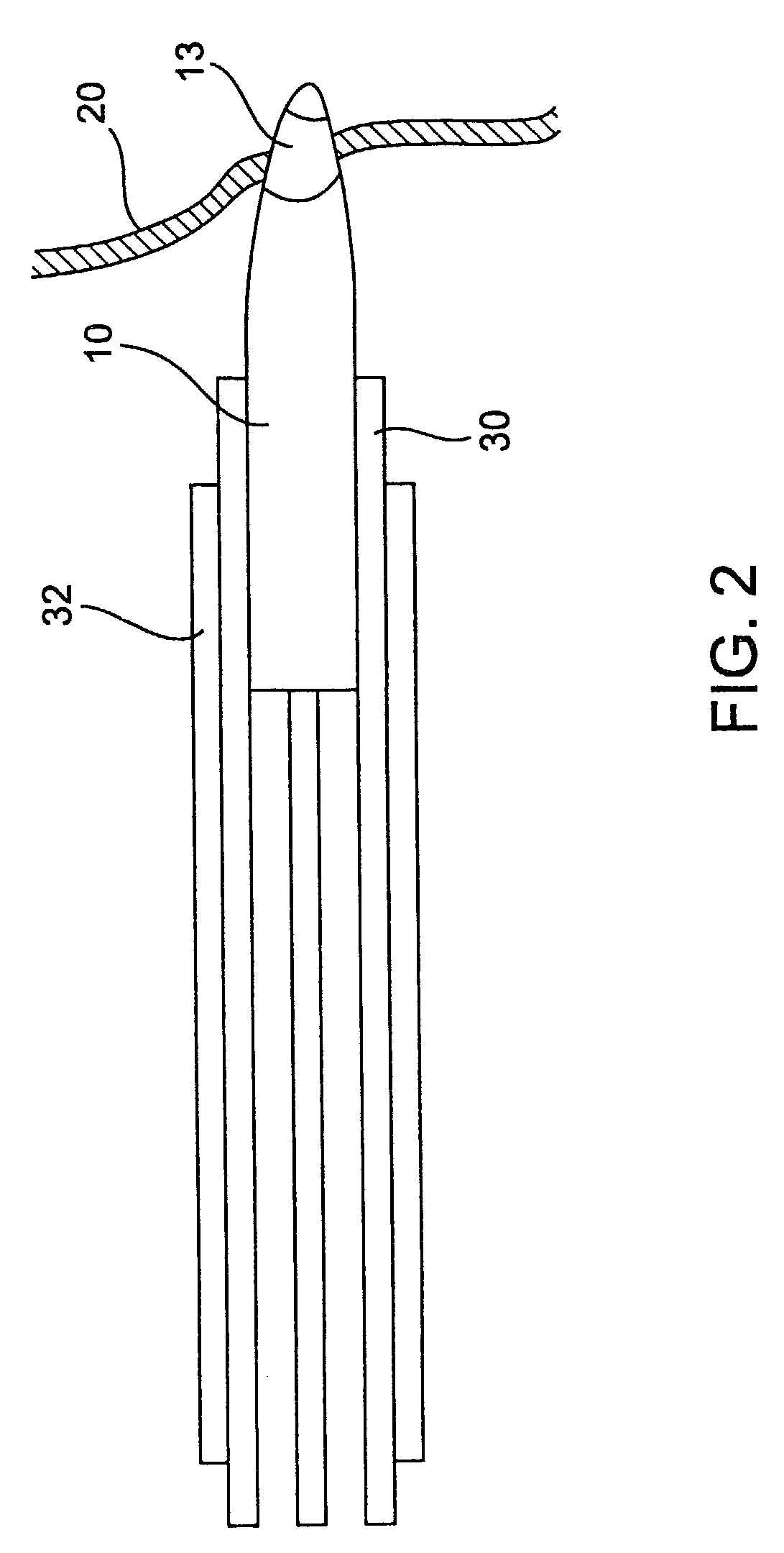Nerve surveillance cannulae systems
a technology of cannulae and surveillance system, which is applied in the direction of diagnostic recording/measuring, applications, and catheters. it can solve the problems of inadvertent contact or damage of paraspinal nerves, danger of pinching or damaging spinal nerves when accessing an intervertebral space, and limiting the methods and devices used in minimally invasive spinal surgery
- Summary
- Abstract
- Description
- Claims
- Application Information
AI Technical Summary
Benefits of technology
Problems solved by technology
Method used
Image
Examples
Embodiment Construction
[0048]As will be set forth herein, the present invention encompasses both nerve surveillance probes which are received through cannulae, and various expandable tip cannulae comprising nerve surveillance probes at their distal ends.
[0049]In a first preferred embodiment, as is seen in FIG. 1, an electromyography nerve surveillance probe 10 having a blunt end 11 is provided. Electrode 13 is disposed at the distal end of probe 10 and is charged by electrical contacts 15. As electrode 13 approaches nerve 20 (as seen in FIG. 2), the minimal threshold depolarization value elicited by the electrode will result in corresponding electromyography activity, such that the presence of nerve 20 can be sensed by standard electromyographic techniques, thus indicating the presence of the nerve. Specifically, using standard electromyographic techniques, the presence of nerve 20 will be sensed by appropriate needles or patches attached to the appropriate muscle as electrode 13 stimulates, and thereby d...
PUM
 Login to View More
Login to View More Abstract
Description
Claims
Application Information
 Login to View More
Login to View More - R&D
- Intellectual Property
- Life Sciences
- Materials
- Tech Scout
- Unparalleled Data Quality
- Higher Quality Content
- 60% Fewer Hallucinations
Browse by: Latest US Patents, China's latest patents, Technical Efficacy Thesaurus, Application Domain, Technology Topic, Popular Technical Reports.
© 2025 PatSnap. All rights reserved.Legal|Privacy policy|Modern Slavery Act Transparency Statement|Sitemap|About US| Contact US: help@patsnap.com



